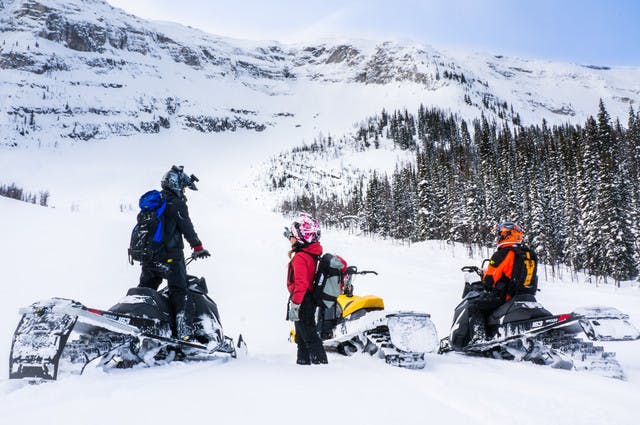- Date
- Saturday, December 31, 2016
When to help and when to wait?
I work with avalanches, and usually that means exhilarating powder, amazing mountainous landscapes, wonderful people, and contributing to public safety in the mountains I love. But it also comes with sadness and tragedy, like yesterday’s fatal accident in Clemina Creek. As an avalanche forecaster, my questions quickly focus on how the outcome could have been different and what lessons can we learn to help prevent the next accident.
Minimizing the number of people exposed to a hazard is a basic tenet of good risk management, but it’s often easier said than done. A skier falls, loses their ski, and three people spend 10 minutes looking for it in the deep powder. Or a sledder gets stuck on a slope and two people come in to help, resulting in three people on the slope at once. People trigger avalanches, and are injured or killed by the avalanches they start.
Depending on how you count, 90 to 95% of avalanches that kill people are triggered by the person themselves, or someone in their group. What happened yesterday in Clemina Creek’s Morning Glory Bowl is consistent with this picture. Our preliminary analysis is that one person was dealing with their stuck sled, two people were riding above, quite possibly coming to assist their buddy, and one of those three people triggered the fatal avalanche. All three were caught, one was on the surface, one partially buried, and the person who lost their life was fully buried.
I don’t want to point fingers or cast blame. My motivation is to identify a recurring pattern, and try to break the chain of events. Yesterday it was a group of sledders, tomorrow it could be those skiers looking for a lost ski.
My question is how do we break the chain? As I suggested earlier, minimizing exposure to a hazard isn’t necessarily easy to achieve, but here are a few ideas for how to manage this common sledding situation:
Riders:
- If you’re in avalanche terrain and stuck, expect to dig and get yourself out, by yourself.
- Recognize there are better or worse times, and places, to get stuck. Personally, I like it when I anticipate and avoid a dangerous situation before it actually happens.
Group Members:
- Watch from safe spot off to the side and well back, out of harm’s way.
- Give the rider time to sort it out by themselves: 10 minutes? 15 minutes? Longer???
- Plan how to help the rider if required: send in only one person and keep spotters watching – they’re the potential future rescuers; consider how to approach (from below or the side, not from above, avoid steepest terrain, avoid likely trigger points, manage terrain traps, etc.)
Spectators:
- Sledding is a social sport with big groups, many groups riding the same areas, and the ability to cover a huge amount of terrain in a short time. People shouldn’t ride the same or closely connected slopes when someone’s stuck, regardless of whether they’re part of your group or not.

The past is behind us and there’s no undoing yesterday’s accident and today’s sadness; only time will help with that. But how do we build situational awareness and develop practices that can help prevent something similar from happening tomorrow. It’s a sincere question and I’d love to hear your thoughts.
ilya storm
istorm@avalanche.ca